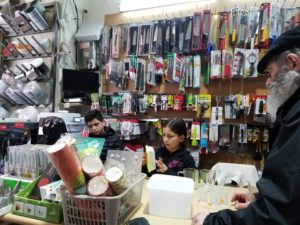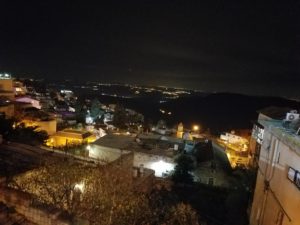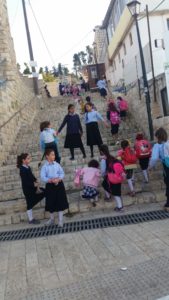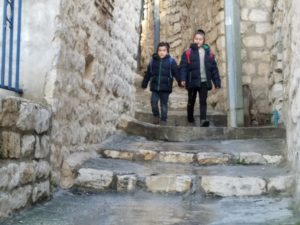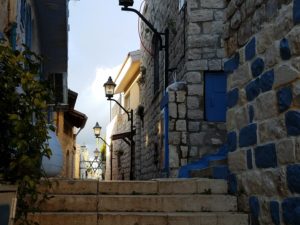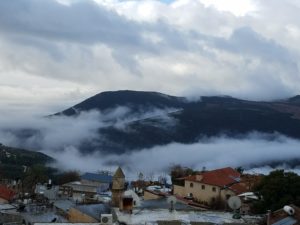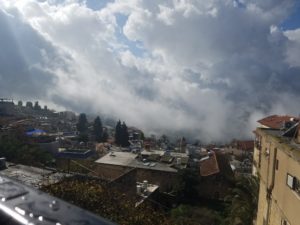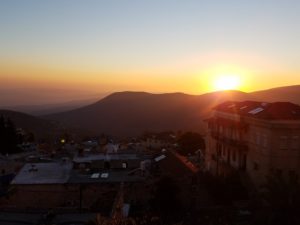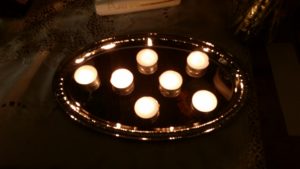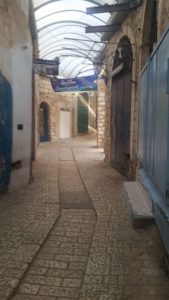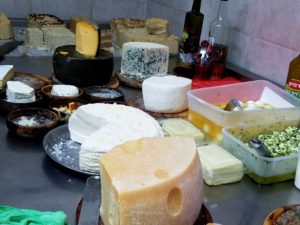
Our house is a very very small house… Our entire Tzimmer (rental unit) is smaller than our kitchen in Maine. We have no stove, and most of our kitchen counter space is taken by electric 2-burner hotplate. Because the storage is small, we have to do shopping every day, but luckily the stores are all within 5 minutes walk. Our favorite shopping place is Yoram’s vegetable Market. In Israel you have to be careful of Trumot and Maasrot (the laws of fruit and vegetables grown in the Land of Israel), but all of Yoram’s produce is kosher accordingly to all the laws. Like many businesses in Tzfat it is a small family-owned business, and we sometimes see his teenage children taking his place in the store helping customers. We never before had such fresh, juicy, delicious fresh fruits and vegetables, full of holiness of the Land of Israel. Yoram is always smiling and friendly, and works long hours. On Fridays we see how he sends huge shipments of produce to hotels and large families to get ready for Shabbos.
Our favorite bakery is similarly a tiny family-owned place, with the constant supply of fresh, warm, just-out-of-oven bread and pastry.For the same reason of little storage place, we also have to cook every day, but much simpler than we used to, unless we are tired and decide to go out to eat in one of many small restaurants within 10 minutes walk. Like Yoram’s market, many of them are tiny one-man operations, with simple food such as kebabs, falafel, shavarma, shakshuka and very simple way to serve food. There are a few fancier restaurants with nicer accomodations and great views. Normally in Israel the town this size would hardly have any restaurants, but Tzfat is a summer vacation place, destination for great Shabbos experience, and in a last few years – a college town, with many college students. Most of the students are arabs, who come to eat in all Jewish restaurants and it is good for Tzfat economy.We have a favorite place for buying cheese, also one-man cheese factory called “Kadosh” that has a most delicious selection of cheeses and chalvas produced right there.
Coming with only 2 suitecases each, we could not bring many books, which we need for our Torah learning and classes we are taking, so we have to buy sforim (Jewish books) here. Fortunately, there are at least half dozen book stores, all close by, which are likewise small family-owned businesses, run by one person, with his children sometimes helping out. Some of the books we buy we have in Maine, but it does not help us here, so our new library of Jewish books is growing more than our current accommodations allow…Even simple daily activities are meaningful, because they make us feel being part of life in Israel, and it is a joyous experience.
We are looking forward to having our own place here, hopefully soon. Wishing everybody Shabbat Shalom.

